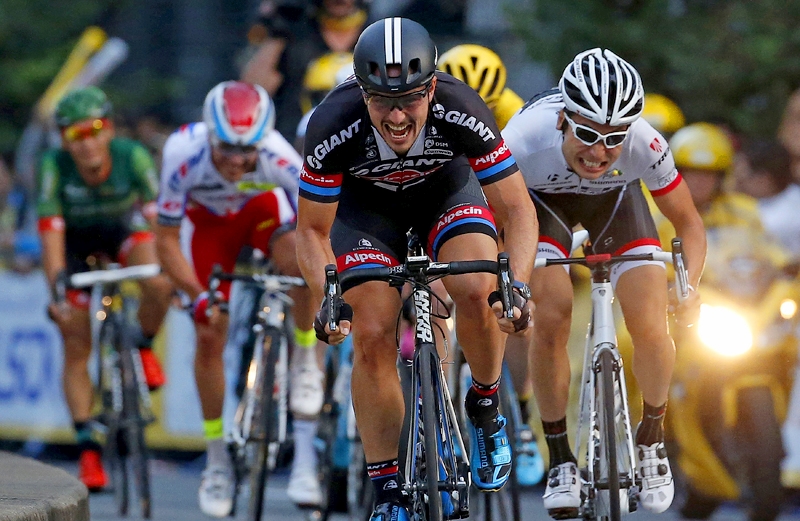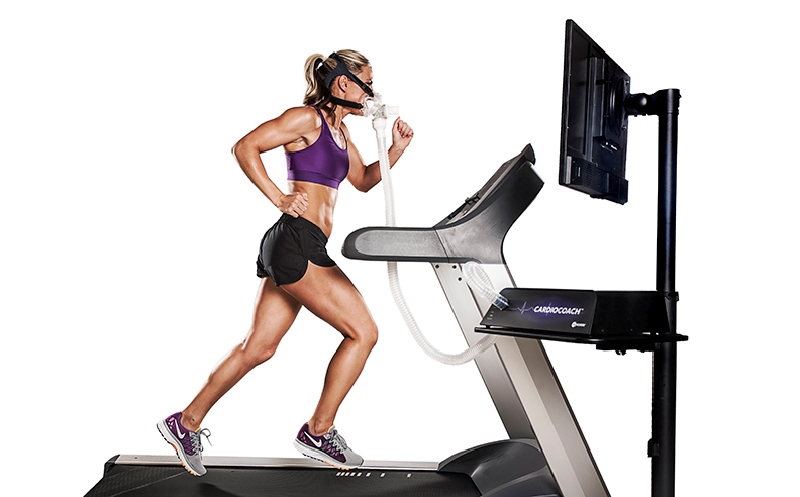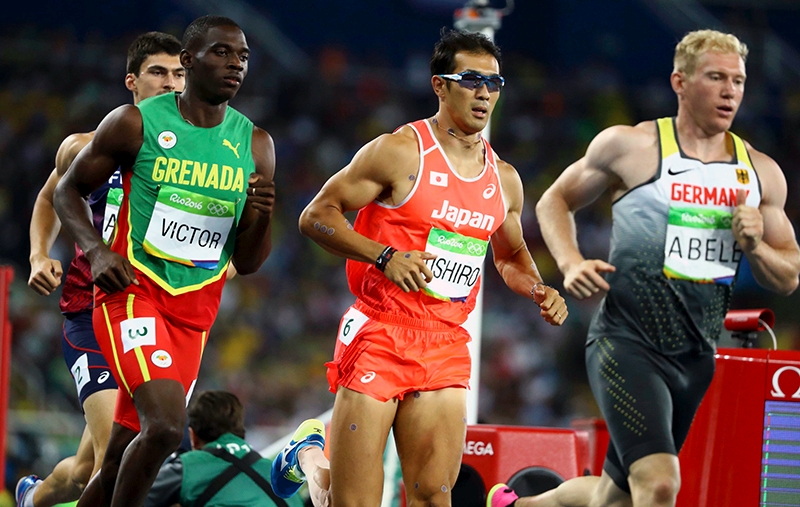Billat intervals: the magic bullet for your next PB?
Rick Lovett looks at an interval training technique known ‘Billat intervals’. What are Billat intervals and how could they help you achieve a slew of new personal bests?

Rick Lovett looks at an interval training technique known ‘Billat intervals’. What are Billat intervals and how could they help you achieve a slew of new personal bests?
South African exercise physiologist Tim Noakes, author of the encyclopedic Lore of Running, has argued that four to six weeks of repeating the same workout will pretty much maximize your body’s adaptation to it, at least until you do something else for a while. That’s why coaches often think in terms of training blocks of four to six weeks, each highlighting different physiological variables. But if you’re an endurance athlete looking for magic bullets, one place to start is with lactate.
In the first article in the series (see here: spb.affino.com/training/training/tame-your-tempo ) we looked at the science behind lactate metabolism and discussed how to use it for two types of workouts: steady-paced tempo runs and “predator” runs in which you steadily speed up, pushing your lactate metabolism though its paces as your legs move through theirs. In the second article
(see here: www.sportsperformancebulletin.com/endurance-training/high-intensity-training/pump-lactate-shuttle-make-lactate-friend-not-foe/ ), we looked at the “lactate shuttle,” in which the body moves lactate from the hard-working muscles in which it is generated to better-oxygenated tissues that can better use it, thereby sparing glucose, the body’s high-octane “anaerobic” fuel, for the muscles that most need it. In that article, we discussed ways to train this shuttle by repeatedly shifting pace from slightly faster than lactate threshold—the point at which lactate levels start to rise rapidly—to slightly below it.
A third trick: Billat intervals
But there’s a third trick in the arsenal, one that has the ability to take your oxygen-processing capacity to a new level. And while it’s not usually discussed in the context of lactate, a case can be made that it too falls into this same general rubric. This technique is called Billat intervals, or Billats for short. It’s named for Veronique Billat, a French exercise physiologist, who has devoted years to figuring out ways to make interval training ever more effective (see figure 1). Billat’s focus is on running at a pace known as vVO2max. The first ‘v’ in this means velocity, so vVO2max is simply the pace you run at maximum oxygen consumption, or VO2max. Or, more specifically, the pace you run when your body first hits VO2max—i.e., the pace you hit at maximum aerobic capacity.
Figure 1: Dr Veronique Billat carries out physiological testing on a masters athlete

Both vVO2max and the maximum time you can hold that pace strongly correlate to performance in endurance events, whether they be running, cycling, kayaking, or swimming. And the correlation holds over a wide range of distances. Billat believes vVO2max training is of use for running distances ranging from the 1500 to the marathon(1). Others have found it to be more predictive than VO2max for running performance at 5km(2), 10km(3), and 16km(4). Research has also found that training at vVO2max is extremely effective not only at increasing VO2max, but also for increasing running economy and lactate threshold(5).
Traditional aerobic intervals are run at or near 5km speed. For runners, these are your traditional ‘long’ intervals: 1000s, 1200s, miles, etc, done on perhaps a 400-meter jog recovery. In other endurance sports, they are repeats lasting about three to five minutes, with recoveries lasting about 50 to 100 percent as long as the repeat itself. Such training can also be done as shorter repeats with shorter recoveries, such as 800s, 600s, and 400s, on 200m recovery. The idea is that each repeat ramps up your metabolism to something close to VO2max and holds it there long enough to improve your aerobic capacity.
But if the goal is to train the body at VO2max effort, these traditional intervals are inherently inefficient. The pace is slow enough that it takes a while to ramp your metabolism all the way up, but the intervals are long enough that you need several minutes to recover. During that recovery, your metabolism drops low enough that it again takes a while to ramp it back up. Thus, if you run 5 x 1000m at, say, 4 minutes each, you will spend a lot less than 20 minutes at VO2max.
If you want to test this yourself, try wearing a heart rate monitor in a short race, like the mile or the 1500m. When of my trainees did so, the monitor reported that her heart rate increased for the entire first minute of the race, meaning it took that long for her metabolism to fully ramp up. And that was in a race, where she was targeting an all-out effort. Not to mention that she was running a lot faster than she would in a mile-repeat.
Billat’s brainstorm
Curious if there might be a more efficient method, Billat got to wondering if there was a better protocol than traditional long intervals. vVO2max was just starting to emerge as a key physiological variable, so she asked the obvious question: what would happen if you shortened the repeats a bit and jumped the pace up to vVO2max? Over the years, he has developed several protocols for accomplishing this. Here are the three best known.
- *Three-minute repeats. This was her first concept. It involves 3-minute repeats at vVO2max, on 3-minute jog recoveries. She picked three minutes because it’s about half the time most people can spend at vVO2max (see box)(6), making the workout tough, but not demoralizing. To test it, she had eight experienced runners (vVO2max an impressive 4:46 per mile) do it at precisely vVO2max, as measured in lab tests. This is not an easy workout; a 1:14:30 female half-marathoner I coached found that five of these were indeed as many as she could do…and she’d have loved to have beaten Billat’s guys by doing a sixth! After four weeks of this, Billat’s runners improved their vVO2maxes, which as we noted above are hugely predictive of race performance, by a whopping three percent(7). If that carries through to race performance that’s an eye-popping 36 seconds for a 20m:00secs 5km runner.
- *30-30s (version 1). Soon after developing the 3-minute protocol, Billat developed another one, this time a good deal less intimidating. Instead of running 3 minutes at vVO2max per repeat, she broke the workout into much shorter segments. The result, now known as Billat 30-30s, involves alternating between 30-second surges at vVO2max, and 30-second jog recoveries, and doing it for as long as possible. What’s interesting about this workout is that during the recoveries, your metabolism is still ramped up to VO2max for a significant amount of time. And it’s still high enough at the end of the recovery that it quickly returns to VO2max when you speed back up. With these quick alternations, she found, you can spend nearly 40 percent more time with your metabolism at VO2max than you spend actually running at vVO2max. But it’s not as taxing as it sounds. Billat found this to be an extremely good early-season workout, and also good for relative newcomers to speed training(6,8). Fifteen to twenty minutes of this, is a lot for most people, so luckily it’s also a workout that’s over fairly quickly!
- *30-30s (version 2). Still later, Billat developed another protocol, this one a (very fast) fartlek session. This workout is the most intense of the three, being suitable mostly for fairly experienced runners, late in the season, rather than early on. After warm-up, you pick up your pace to vVO2max, and hold it for a minute. The reason for 60 seconds, rather than 30, is to not waste time ramping up your metabolism. Also, if you are running on a track, this will also allow you to cover at least 200 meters, a good point at which to take a split to make sure you’re not wildly off pace. After that first fast-paced minute, you cut back not to an easy jog, but to tempo pace (perhaps 45 to 60 sec/mile slower than vVO2max) for 30 seconds. Then you speed back up, repeating tempo-pace recoveries and 30-second surges for as long as you can.
Don’t worry if this is a bit scary the first time. The idea of doing any workout until you pack it in is inherently intimidating. The good news is that when you reach the end, it’s obvious that you’ve gotten there. Either you start to ‘cheat’ the 30-second tempo recoveries by running them slower - effectively turning this version of the workout into version 1, above - or you reach the point where you’re supposed to speed up again and find your body saying something akin to ‘what the heck?’
If you’re looking for a benchmark, if you can make it a total 3,200 to 3,600 meters, you’re doing very well. If you can’t make it to 10 minutes, take a break and try a few more repeats. You were probably running too fast. After you’ve done it once, this workout isn’t as intimidating, because now you have a benchmark. Do this once a week, for a month, then shift gears to something else for a couple of weeks, then taper. You might be pleasantly surprised by your next race result.
Finding your pace
vVO2max isn’t something you can measure precisely without the help of an exercise physiology lab. But Billat and others put it at about the pace you can run in a race or time trial lasting about 6 minutes(6). For most of us, that’s somewhere between 1500m pace and 3000m pace, but probably closer to 1500m pace. It’s also likely to be about 7-10% faster than your 5km pace. It’s by no means your top speed, but aerobically, you’re maxed out.
Cyclists, triathletes, and others
Billat’s workouts are geared for runners, but athletes in any endurance sport can relate to the concepts of VO2max and vVO2max. Use the six-minute time trial to establish your vVO2max, then try doing 30-30s or three-minute repeats, in whatever protocol most effectively matches the ones Billat used for runners.
Lactate shuttle revisited
Why Billat’s workouts work so well is open to debate. Partly, it appears to be simply the value of training at vVO2max. But it probably also relates to the fact that these workouts, particularly the various versions of 30-30s, are unusually effective at keeping the metabolism at VO2max, even when you are ostensibly recovering.
Why the metabolism stays in high gear under such circumstances could be the subject of an entire article. We all know that when we run hard, then slow down, we continue breathing hard for some time afterward. It used to be called ‘oxygen debt’, though that particular term has fallen into disrepute. But the idea remains: when we’ve worked hard, then slowed down, our bodies continue demanding oxygen at a rate vastly disproportionate to our current efforts.
Partly, this may be related to the need to restore cellular levels of high-energy molecules like ATP and creatine to their baseline values. Also, recovery is the time when your body is working to rebuild and strengthen damaged tissues and do all the things it does to strengthen you between workouts. But creatine and ATP recovery are very short-term processes, while rebuilding is a long-term effect - generally related to small ramp-ups in the metabolic level lasting from hours to days(9). Here, we’re talking about the ramp-up of the metabolism, all the way to VO2max, during the 30-second recoveries in Billat’s 30-30 workouts.
My own theory is that this has something to do with the lactate shuttle, and that Billat’s 30-30 workouts, with their intense, rapid-fire pace changes, may be an unusually effective way to train that shuttle. If so, that would mean that during the fast-paced recoveries, your body is trying to adapt to the abundance of lactate produced by your muscles, training your brain, heart, diaphragm, liver, and lesser-working muscles like your arms to become more adept at using it rather than stealing glucose from your legs.
Is there proof of this? None that I can find, other than the fact that one of the benefits of vVO2max workouts is improved lactate threshold. But that’s enough of a link to catch my attention. The bottom line is that Billats of all forms are another form of yo-yo-ing your blood lactate levels, and as such, they deserve to be considered in the lactate rubric.
Case study: Theresa Hailey

Portland, Oregon, runner Theresa Hailey loves Billats. She first tried them this spring when, coming off a 2:44:19 PB marathon that qualified her for the 2020 US Olympic Team Trials, she shifted focus to shorter events. After a couple of tune-up 5kms, she ran four weeks of Billat 30-30s (version 2), then ran a massive 10km PB of 34:52 on the roads. Two months later, after another couple of weeks of Billats, she followed that up with a rapid-fire sequence of additional huge PBs: 9:42.27 (3K), 16:46.32 (5K), and 4:50.61 (mile), all in a 21-day window.
For her, the workout is about a lot more than exercise physiology. “What I loved most about Billats was how they pushed me to run in a very uncomfortable zone with no pressure,” she says. “I loved that it was up to me to choose when to stop, but at the same time, it tested me both mentally and physically.”
It helps, she notes, that each time she did the workout, she got slightly faster. “My splits were decreasing, which gave me confidence that what we were doing was working, and made me want to do more of them. I looked forward to each workout. I loved that I had complete control of each speed zone, and how fast and hard I pushed was up to me. Likewise, how slow my rest was, was up to me. And once I found the rhythm, I couldn’t break it. I have felt much more confident and competitive when approaching a race of any distance after going through a Billats cycle.”
References
[1] Billat LV and Koralsztein JP (Aug 1996). Significance of the velocity at VO2max and time to exhaustion at this velocity, Sports Med; 22(2):90-108.
[2] Lee N. Cunningham (1990). Relationship of Running Economy, Ventilatory Threshold, and Maximal Oxygen Consumption to Running Performance in High School Females, Research Quarterly for Exercise and Sport, 61:4, 369-374, DOI: 10.1080/02701367.1990.10607501.
[3] Morgan DW, Baldini FD, Martin PE, Kohrt WM (Feb 1989). Ten kilometer performance and predicted velocity at VO2max among well-trained male runners. Med Sci Sports Exerc; 21(1):78-83.
[4] McLaughlin JE, Howley ET, Bassett DR Jr., Thompson DL, Fitzhugh EC. (May 2010). Test of the classic model for predicting endurance running performance. Med Sci Sports Exerc; 42(5):991-7. Doi: 10.1249/MSS.0b013e3181c0669d.
[5] Owen Anderson. VO2max is a poor predictor of performance, but computing your velocity at VO2max can pay big benefits. (Sept-Oct 1994). Running Research News, 10(5), pp. 1-3.
[6] Owen Anderson. Running Science (Human Kinetics 2013), p. 328-335.
[7] Billat VL, Flechet B, Petit B, Muriaux G, Koralsztein JP (Jan 1999). Interval training at VO2max: effects on aerobic performance and overtraining markers. Med Sci Sports Exerc; 31(1):156-63.
[8] Billat, V., Slawinski, J., Bocquet, V. et al (2000). Intermittent runs at the velocity associated with maximal oxygen uptake enables subjects to remain at maximal oxygen uptake for a longer time than intense but submaximal runs. Eur J Appl Physiol; 81: 188. doi.org/10.1007/s004210050029
[9] Schuenke, Mark; Mikat, Richard; McBride, Jeffrey (2002). “Effect of an acute period of resistance exercise on excess post-exercise oxygen consumption: Implications for body mass management”. European Journal of Applied Physiology. 86(5):411–7. doi:10.1007/s00421-001-0568-y.
Newsletter Sign Up
Testimonials
Dr. Alexandra Fandetti-Robin, Back & Body Chiropractic
Elspeth Cowell MSCh DpodM SRCh HCPC reg
William Hunter, Nuffield Health
Newsletter Sign Up
Coaches Testimonials
Dr. Alexandra Fandetti-Robin, Back & Body Chiropractic
Elspeth Cowell MSCh DpodM SRCh HCPC reg
William Hunter, Nuffield Health
Keep up with latest sports science research and apply it to maximize performance
Today you have the chance to join a group of athletes, and sports coaches/trainers who all have something special in common...
They use the latest research to improve performance for themselves and their clients - both athletes and sports teams - with help from global specialists in the fields of sports science, sports medicine and sports psychology.
They do this by reading Sports Performance Bulletin, an easy-to-digest but serious-minded journal dedicated to high performance sports. SPB offers a wealth of information and insight into the latest research, in an easily-accessible and understood format, along with a wealth of practical recommendations.
*includes 3 coaching manuals
Get Inspired
All the latest techniques and approaches
Sports Performance Bulletin helps dedicated endurance athletes improve their performance. Sense-checking the latest sports science research, and sourcing evidence and case studies to support findings, Sports Performance Bulletin turns proven insights into easily digestible practical advice. Supporting athletes, coaches and professionals who wish to ensure their guidance and programmes are kept right up to date and based on credible science.













